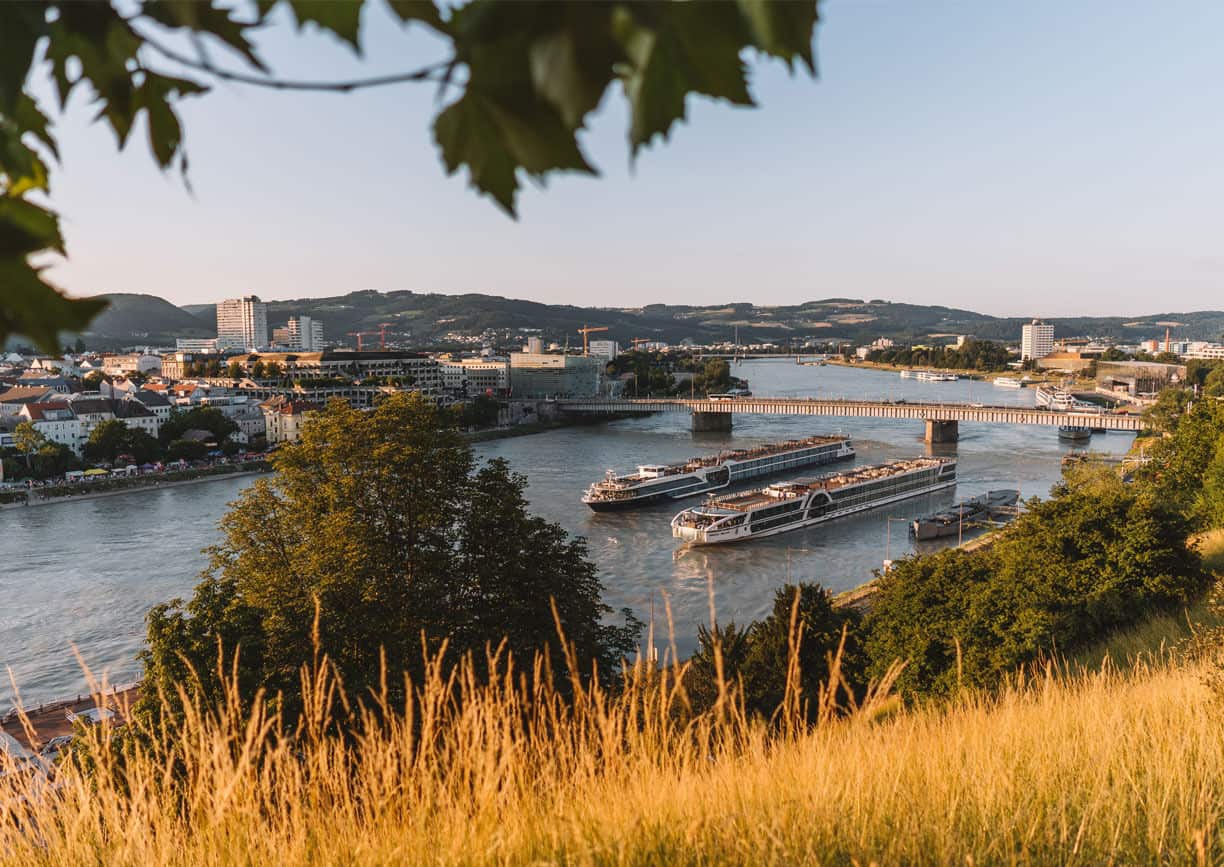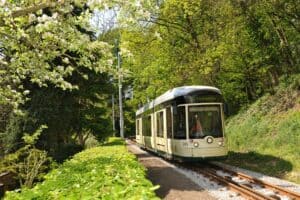Linz is the capital of Upper Austria and, with 206,595 inhabitants, the third largest city in Austria after Vienna and Graz.
After the end of the Second World War (1945), Linz had the reputation of being a dusty steel town, which it owed to its largest employer, the steelworks of today's Voestalpine AG. But through improved environmental protection and numerous initiatives in the cultural sector, for example events such as the Linzer Klangwolke, the Brucknerfest, the Pflasterspektakel and the Prix Ars Electronica or the Ars Electronica Festival, the city gradually gained a new image. The Crossing Europe film festival has been held annually since 2004. In 2013, the new music theater at the Volksgarten, a modern theater and opera house, was opened. With these and other initiatives, Linz was able to position itself as a cultural city, although some of the structures of the old industrial city are still visible. In keeping with this, Linz, as a university city with several universities, also offers numerous study programs in the artistic and cultural fields.
The city gives its name to the Linzer Torte, the recipe of which is considered to be the oldest known cake recipe in the world.
Places of interest
Important sights can be found throughout the city center, the oldest part of Linz. The main street “Landstraße” leads from Blumauerplatz to the Taubenmarkt near the main square.
The main square, which was laid out around 1230, is one of the largest squares in Europe with an area of 13,200 m². In the middle of the main square is the 20-meter-high Trinity Column made of white marble, erected between 1717 and 1723, in memory of the victims of the plague. There are many historically relevant or architecturally interesting buildings around the main square, such as the Old Town Hall, built in the 16th and 17th centuries, the Feichtinger House with its famous carillon, which changes its melody depending on the season, the Kirchmayr House, the Schmidtberger House or the Brückenkopf buildings, which house part of the Linz University of Art.
To the west of the main square lies the old town district with many other historic buildings, such as Renaissance town houses or older houses with a Baroque look. Near the castle, which was the residence of Emperor Frederick III from 1489 to 1493, is the Romanesque St. Martin's Church from the 11th century. To the east of the main square lies the town hall district.
Exemplary selection of other sights:
- The Roman Catholic Cathedral of the Immaculate Conception was built from 1862 to 1924 in the neo-Gothic style and is the largest church in Austria.
- The Linz Gugl Stadium is an athletics and football stadium that is made available by the city of Linz for games to FC Blau-Weiß Linz and LASK (Linzer Athletik Sport Klub), which is considered the third oldest football club in Austria.
- In the Mozart House, which was built in the second half of the 16th century, Wolfgang Amadeus Mozart composed the "Linz Symphony" and the "Linz Sonata" in just three days. The house itself can only be viewed from the outside, but the guest garden is open to the public.
- The Kremsmünster House is located on the “Alter Markt” in Linz’s old town. According to legend, Emperor Friedrich III died here in 1493.
- The country house dates back to the 16th century and is now the seat of the governor, the state parliament and the state government of Upper Austria. The Italian-inspired arcade courtyard is a reminder of Johannes Kepler, who taught here for 14 years at the Protestant landscape school.
Other popular sights are the museums mentioned above, which are also architecturally interesting and impressively illuminated in the evenings (such as the Ars Electronica Center or the Lentos Art Museum), the Brucknerhaus, the Tabakfabrik, the Donaulände, the Linz harbor including Mural Harbor, the Voestalpine Stahlwelt or the Urfahr district. The Pöstlingberg is in the vicinity, from which the baroque pilgrimage basilica, the Linz Zoo or the fairy tale and dwarf kingdom of the Linz Grottenbahn can also be visited.



